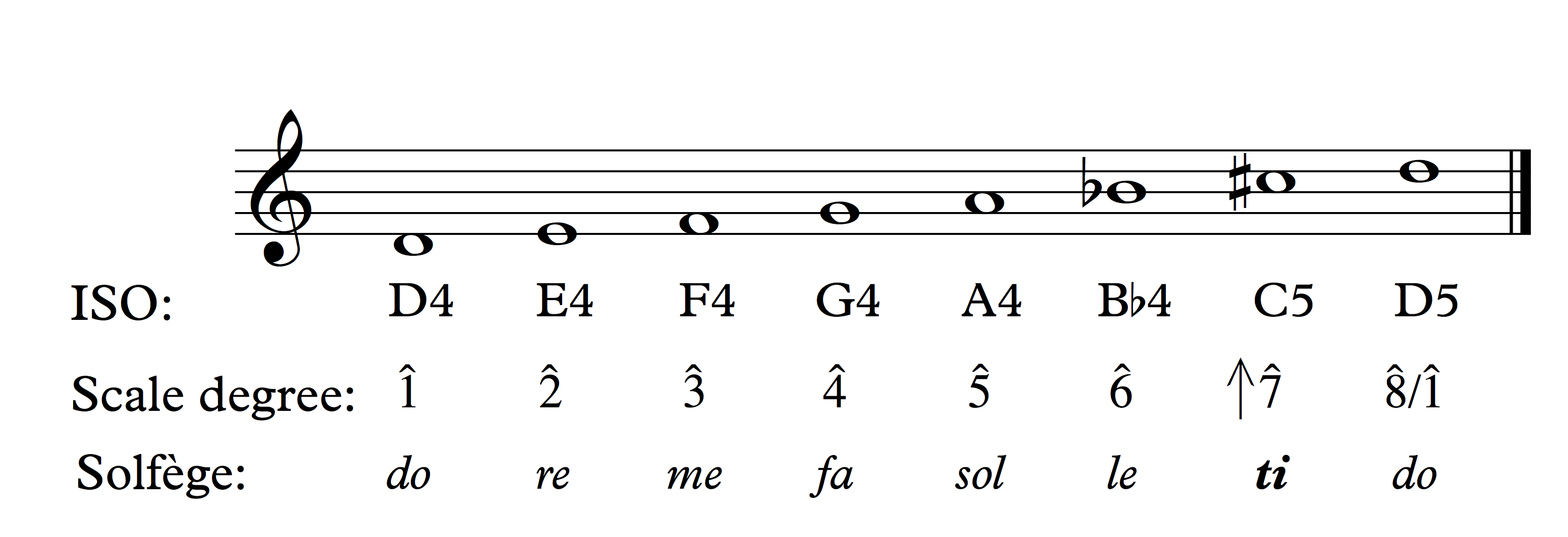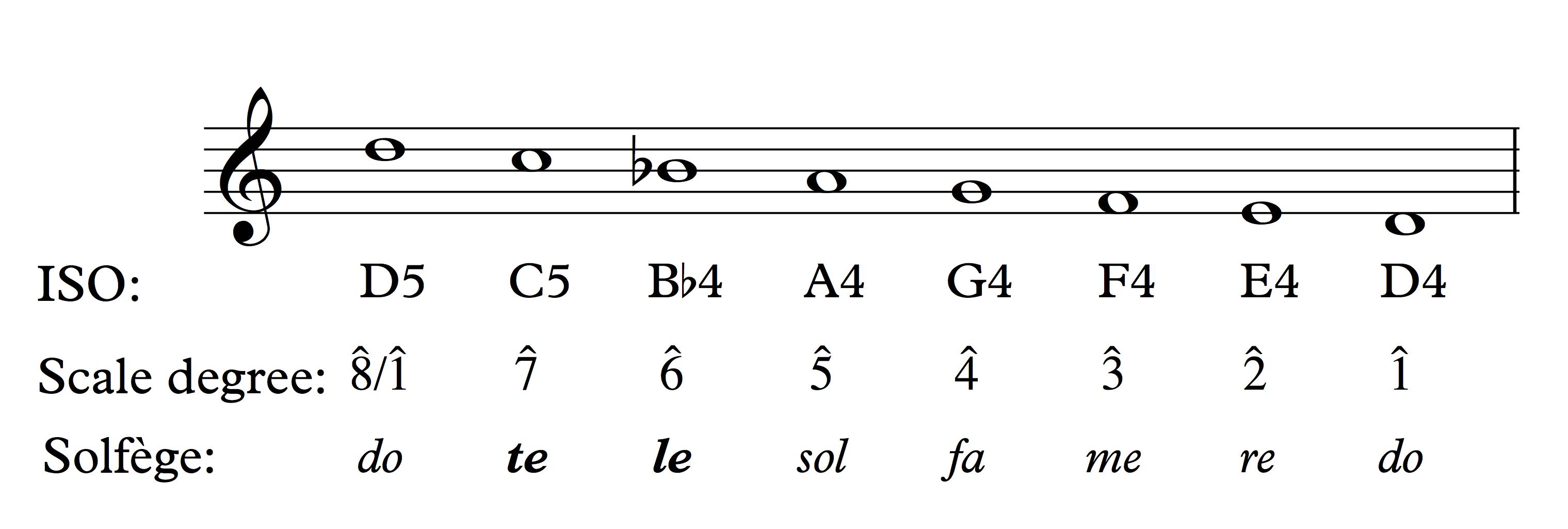Integrated Music Theory 2019-20
Discussion 2b - Scales and Scale Degrees - Diatonic, Pentatonic, and Chromatic
Class discussion
What is the definition of a scale?
- A series of whole steps and half steps, 7 pitches not including the octave, defined by a key signature
- Sequence of pitches that have a specific tone (specific tonality?)
- Any # of pitches (includes pentatonic and chromatic scales)
- Based on a set of rules–each type of scales has its own rules
- Series of intervals larger than unison
- Repeatable set of consecutive notes
- Scales are based on the mode of whatever piece they correlate with
- Defined by the harmonies they create, harmonies defined by notes in scale
- Ordered in ascending or descending fashion
- Contains only unique pitches
Theoretical fancy professional definition of a scale
- More than one pitch = a pitch collection. Put the pitch collection in ascending order up to an octave and you have a scale! Arpeggios are technically scales
- Needs tonality, which means it needs a tonic aka a note around which the rest of the scale is organized
- Additional note: must contain unique pitches and no enharmonics
^ signifies a scale degree! It goes over the number, not to the side like we have to write it here on the website.
##Further Reading
From Open Music Theory
A scale is a succession of pitches ascending or descending in steps. There are two types of steps: half steps and whole steps. A half step (H) consists of two adjacent pitches on the keyboard. A whole step (W) consists of two half steps. Usually, the pitches in a scale are each notated with different letter names, though this isn’t always possible or desirable.
The Chromatic Scale
The chromatic scale consists entirely of half steps, and uses every pitch on the keyboard within a single octave. Here is the chromatic scale that spans the pitches C4 through C5.

The major scale
A major scale, a sound with which you are undoubtedly familiar, consists of seven whole (W) and half (H) steps in the following succession: W-W-H-W-W-W-H. The first pitch of the scale, called the tonic, is the pitch upon which the rest of the scale is based. When the scale ascends, the tonic is repeated at the end an octave higher.
Here is the D major scale. It is called the “D major scale” because the pitch D is the tonic and is heard at both ends of the scale.

Scale degrees and solfège
While ISO notation allows us to label a pitch in its specific register, it is often useful to know where that pitch fits within a given scale. For example, the pitch class D is the first (and last) note of the D-major scale. The pitch class A is the fifth note of the D-major scale. When described in this way, we call the notes scale degrees, because they’re placed in context of a specific scale. Solfège syllables, a centuries-old method of teaching pitch and sight singing, can also be used to represent scale degrees (when used in this way, this system is specifically called movable-do solfège).
Scale degrees are labeled with Arabic numerals and carets (^). The illustration below shows a D-major scale and corresponding ISO notation, scale degrees, and solfège syllables.
The minor scale
Another scale with which you are likely very familiar is the minor scale. There are several scales that one might describe as minor, all of which have a characteristic third scale degree that is lower than the one found in the major scale. The minor scale most frequently used in tonal music from the Common Practice period is based on the aeolian mode (you’ll read more about modes later), which is sometimes referred to as the natural minor scale.
The natural minor scale consists of seven whole (W) and half (H) steps in the following succession: W-H-W-W-H-W-W. Note the changes in solfège syllables.
If you sing through the above example, you’ll notice that the ending lacks the same sense of closure you heard in the major scale. This closure is created in the major scale, in part, by the ascending semitone between ti and do. Composers often want to have this sense of closure when using the minor mode, too. They’re able to achieve this by applying an accidental to the seventh scale degree, raising it by a semitone. If you do this within the context of the natural minor scale, you get something called the harmonic minor scale.
Now the last two notes of the scale sound much more conclusive, but you might have found it difficult to sing le to ti. When writing melodies in a minor key, composers often “corrected” this by raising le by a semitone to become la when approaching the note ti. When the melody descended from do, the closure from ti to do isn’t needed; likewise, it is no longer necessary to “correct” le, so the natural form of the minor scale is used again. Together, these different ascending and descending versions are called the melodic minor scale.
When ascending, the melodic minor scale uses la and ti.
When descending, the melodic minor scale uses the “natural” te and le.
Truth be told, most composers don’t really think about three different “forms” of the minor scale. The harmonic minor scale simply represents composers’ tendency to use ti when building harmonies that include the seventh scale degree in the minor mode. Likewise, the melodic minor scale is derived from composers’ desire to avoid the melodic augmented second interval (more on this in the intervals section) between le and ti (and some chose not to avoid this!). In reality, there is only one “version” of the minor scale. Context determines when a composer might use la and ti when writing music in a minor key.




